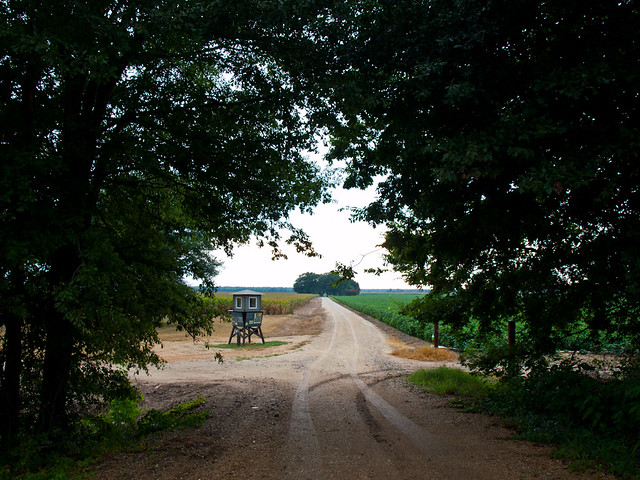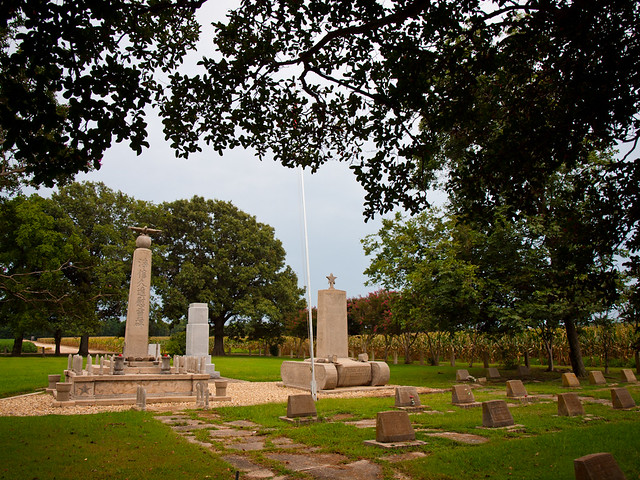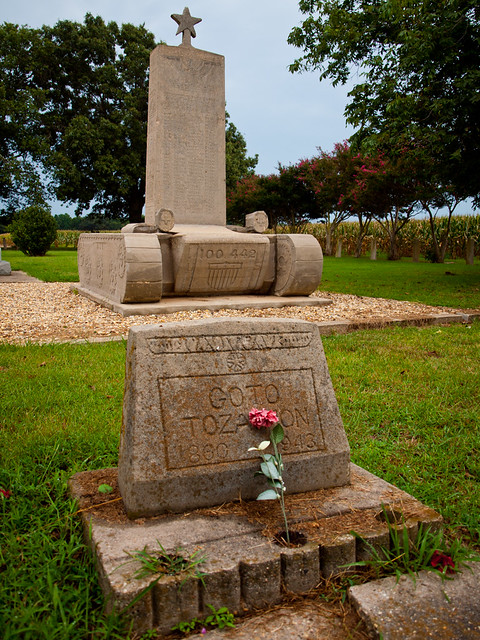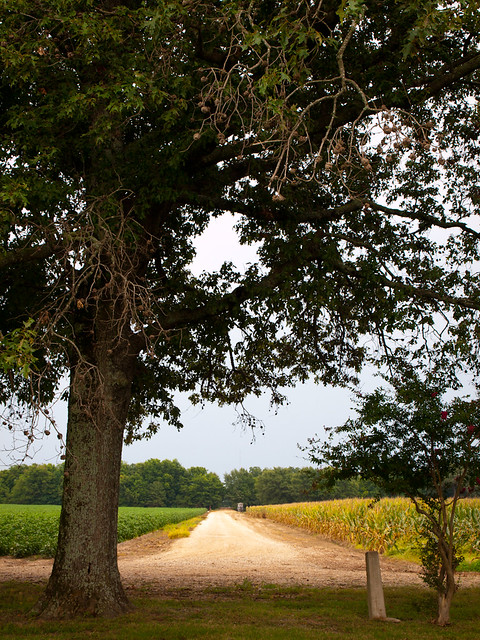The internment camp was situated on about 10,000 acres of land, which was surrounded by dense swamps and forests. After opening in September of 1942, the camp would house about 8,000 people.
This was taken at the southern edge of the camp. The guard tower was recently built, and includes some educational signs about the camp.

The Rohwer camp operated from September 1942 to November 30, 1945. After the war, the camp was closed and the relocated citizens were allowed to return to their homes. The barracks and other buildings at the camp were torn down, and replaced with acres and acres of cotton fields. Very little remains of the camp now. The only real reminder that there was even a camp here is a small cemetery, the final resting place of several camp residents.

There are two large concrete markers. One is a monument to those who died while at the camp. The other marker is shaped like a tank, and honors the camp residents who volunteered, and died, to fight for the US Army in France and Italy during the war. Thirty-one soldiers from Rowher died in battle, and their names are listed on the memorial.

The last time I visited here, in 2010, the cemetery was showing its age. The concrete was cracked and broken, with a pool of stagnant water surrounding the markers. Since then, the cemetery markers have been restored and new interpretive signs have been installed. Several feature the voice of George Takei, who lived here for a brief time in 1942. Several of the signs have audio, sending out his voice across the quiet cemetery grounds.

I took lots of pictures out there, after waiting for the camera to de-fog after being exposed to the thick summer humidity. I had been wanting to go back and visit this spot for several years. My grandmother grew up in the nearby town of Watson, and actually worked here at the camp during the war. She worked in the administrative offices, which were generally kept separate from the Japanese population. She needed help making ends meet while my Grandfather was in the Navy (stationed at Okinawa), and the relocation camps were one of the few places in that part of the state that were hiring. I wish I had thought to ask her more about her time at Rohwer when I had the chance.



No comments:
Post a Comment